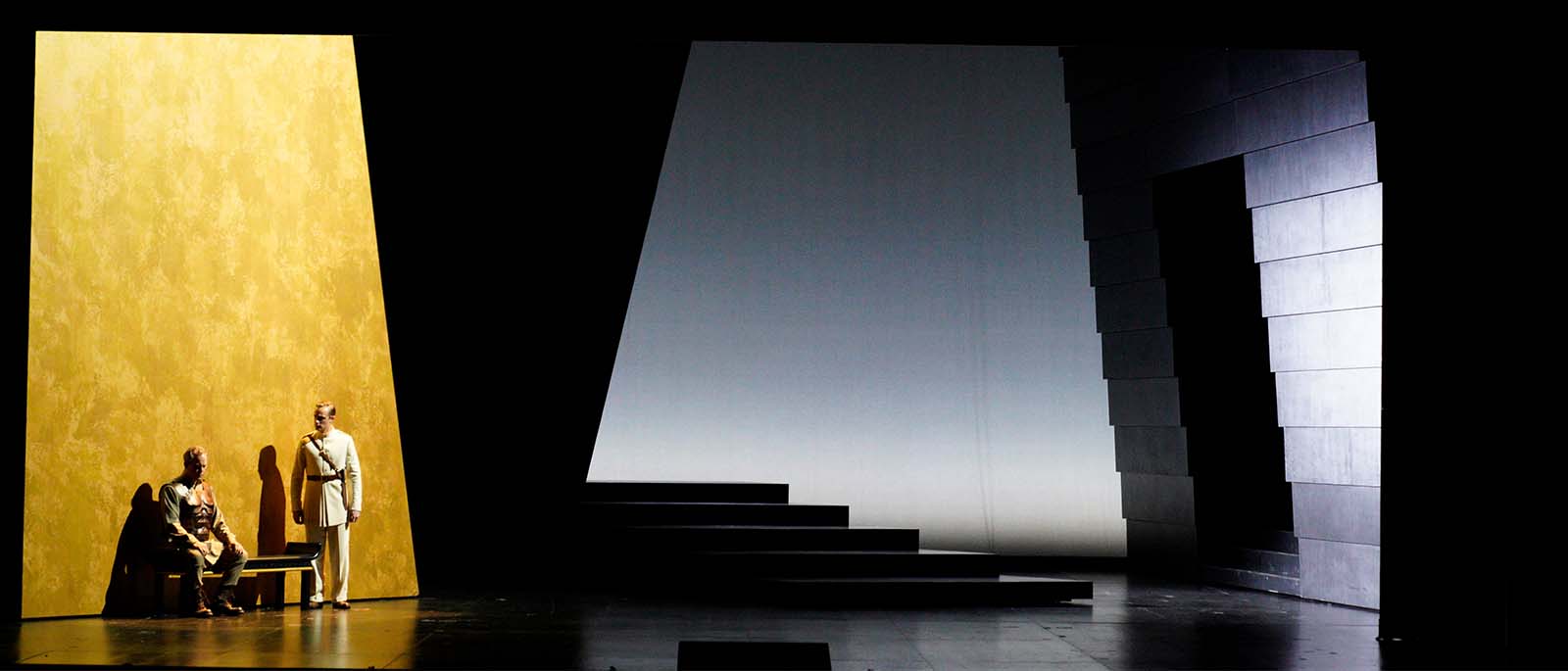
Antony and Cleopatra
Set in the twilight of the Roman Republic, John Adams’s Antony and Cleopatra brings Shakespeare’s legendary lovers to life through hypnotic minimalism and a cinematic ambience inspired by Golden Age Hollywood. Mark Antony—Roman general, military hero, torn between duty and desire—is hopelessly in love with Cleopatra, the bold and brilliant Queen of Egypt. Meanwhile in Rome, Caesar Augustus’s political ambitions threaten the balance of power as he becomes emperor, and Rome subsumes Egypt under its dominion. As political and emotional tempers flare, Antony and Cleopatra’s affair spirals into obsession, betrayal, and ultimately tragedy.
Adams’s music pulses with intimate sensuality, political grandeur, and emotional depth as it portrays the varied passions of the opera’s central characters. The composer’s unique aesthetic of post-minimalism draws out the play’s psychological drama with complex layers of musical material that can swerve from playful to confrontational without a moment’s notice. A fluctuating personality in its own right, the orchestra draws on the lush opulence of the Romantic tradition and employs diverse instrumental timbres for maximum dramatic effect. Cleopatra’s seductive melodies and authoritative arias complement Antony’s conflicted expression, which hovers between the pull of Egypt’s lyricism and the declamation of Roman might. In contrast to both, Caesar’s calculated and dispassionate rhythmic motives display a relentless offense that mirrors the emperor’s rise to power. The result of Adams’s savvy and modern adaptation of Shakespeare’s original play is an opera whose subject matter is both timeless and urgently contemporary.
This guide is intended to help your students understand the plot’s real-life history and John Adams’s style of American opera. The information on the following pages is designed to provide context, deepen background knowledge, and enrich the overall experience of attending a final dress rehearsal at the Metropolitan Opera.